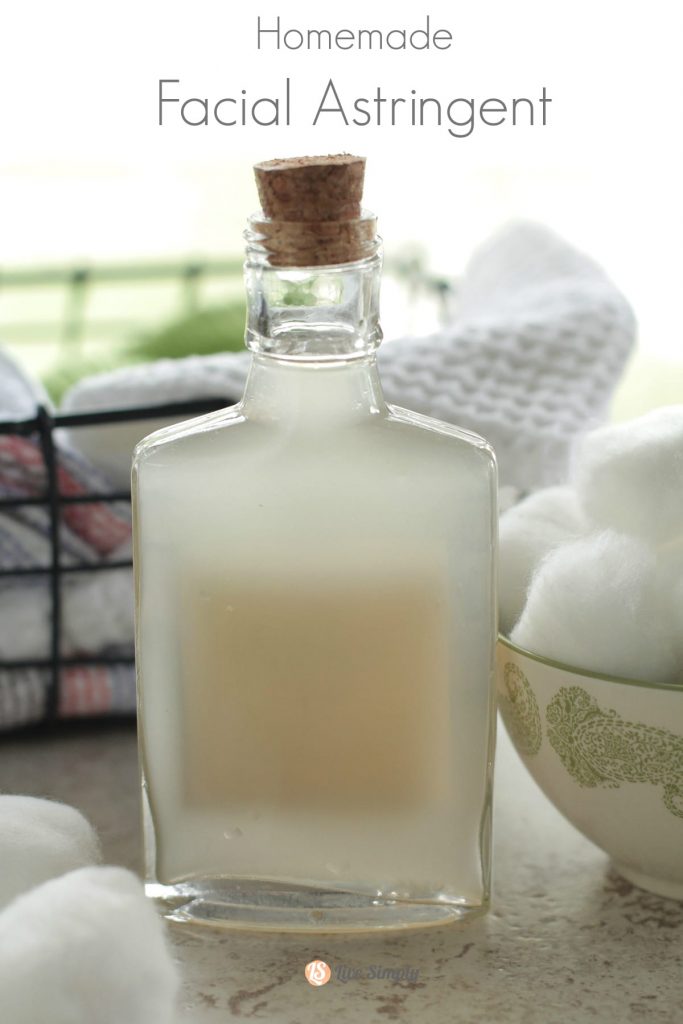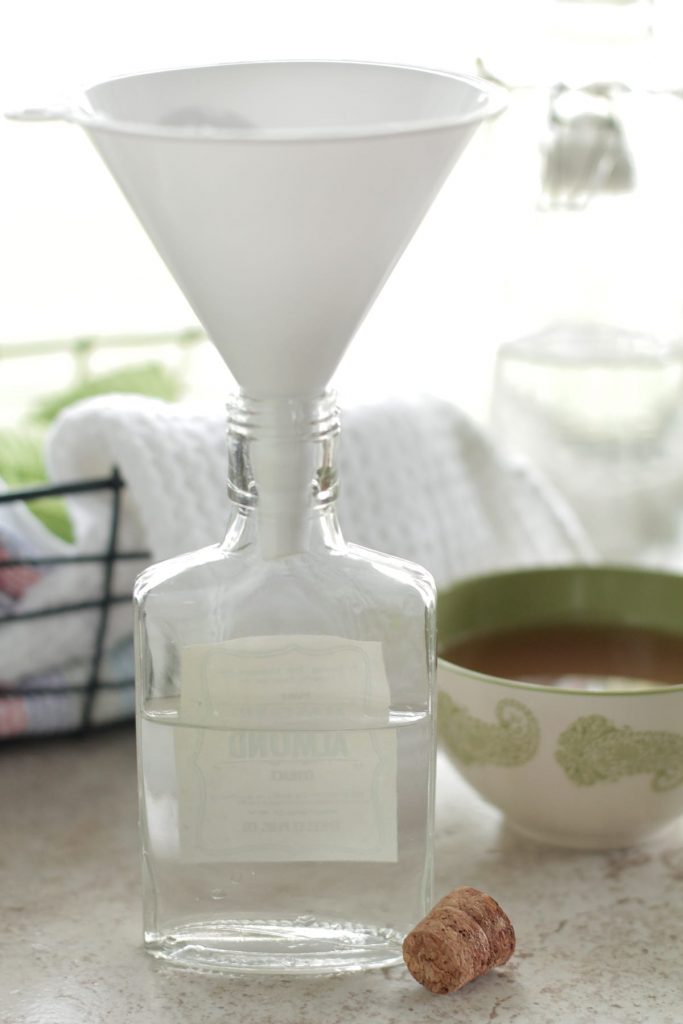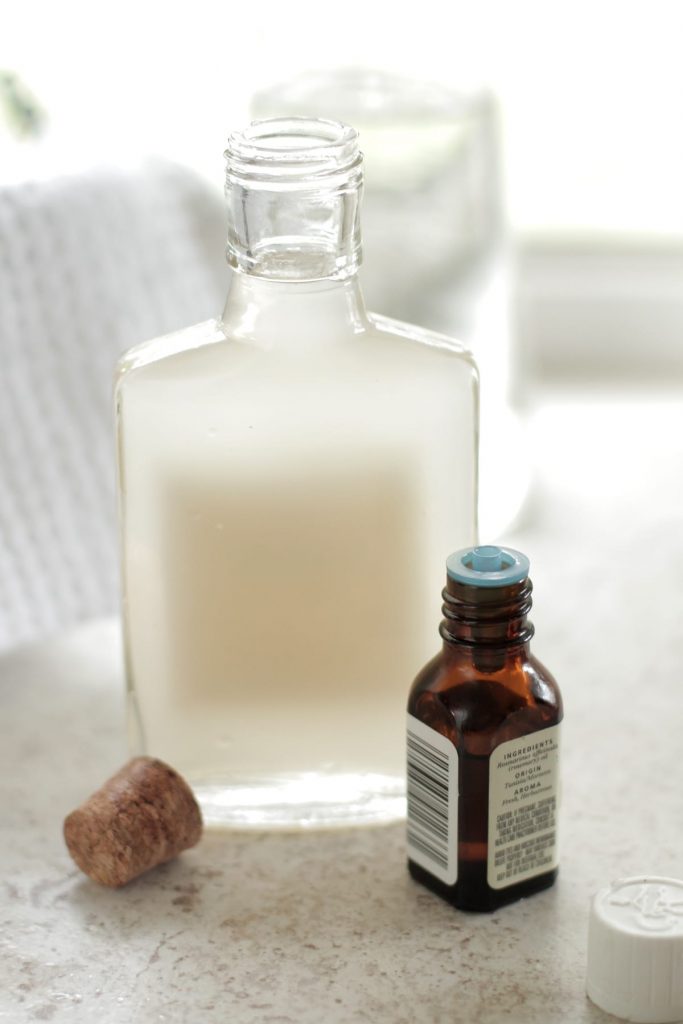I think it’s been established, I have quite the past.
I’ve been a beet-hater (now, a lover). A Chick-Fil-A and fast food lover (before real food). I recently gave up store-bought laundry soap (thank you awesome homemade recipe), but still have yet to give up shampoo (I just can’t do it, yet). If it smells of toxins, I’ve probably smeared it on my body or eaten at least a few bites in my lifetime. It’s true!
Over the past couple of years I’ve been on a mission to not only remove the “dirty” ingredients from our food, but also our personal care products. It hasn’t always been easy. I’ve had some serious ties to many toxic products. Some nostalgic (the smell of Tide), others just too comfortable to give up. The thought of switching store-bought products for homemade versions seemed complicated, far from simple.
I slowly started with my go-to product, foundation powder. Hey, I love my make-up. It’s magical, remember? I was pleasantly surprised how a few simple ingredients and five minutes could make a great product that was safe for my skin. Easy peasy. Since that first experiment, I’ve made: lotion/body butter, surface cleaner, body wash, toothpaste, laundry soap, vapor rub, and boo-boo cream.
Last month I switched-up my homemade skin-care regime. Even with my homemade lotion and natural face wash, I was noticing increased break-outs and peeling. After good counsel from my friend and natural skin-care guru, Jessica, I decided to change things up and create a new lotion/body butter recipe. Every good skin-care regime needs a bit of a change every now and then.
Jessica also recommended trying an astringent after washing and before moisturizing. At the mention of “astringent” my mind drifted to my teenage days and the expensive blueish-green bottles of Clinique. For years, I used those toxic bottles of astringent, never noticing any improvement to my skin (probably more damage). Finally one insightful day, I realized I was much too poor for $30 astringents.
For nine years, I haven’t used any astringent. With the mention from Jessica I decided it was time to revisit astringent, but this time with a homemade version. With three simple ingredients I was able to make a pH-balanced, homemade facial astringent recipe, for just pennies. In fact, the ingredients for this simple and natural astringent were already in my cabinets, just waiting to be used.
This recipe is made with three simple ingredients: distilled water (yes, you need distilled), Apple Cider Vinegar, and a few drops of essential oil (optional, but helpful). The simple ingredients create an astringent that tightens pores, keeping the unwanted junk from entering. Much like the Avengers– protecting and defending you from all the bad guys wanting to wage war on your lovely pores. If you have oily skin, like myself, this astringent is your new best friend. Simply apply using a cotton ball, after cleansing your face in the morning and evening, and follow with a moisturizer.

Simple Homemade Facial Astringent
Ingredients
- 1 cup distilled water this is important to keep bacteria from forming
- 1/4 cup apple cider vinegar
- 10 drops lemon essential oil (optional) or your favorite essential oil. Other suggestions: lavender or geranium
Instructions
- In a large bottle (use glass, if using essential oils) combine the ingredients. Shake well.
- To use, Keep on the counter away from direct sunlight. Apply a small amount to a cotton ball or pad and wipe face.






Trying this mix out with witch hazel instead of water. Crossing my fingers!
Hey Jessica, Let me know how it goes.
On thank you, I love you for sharing this. Am going to try it asap xoxo
Hi, just wondering if I can use orange essential oil instead of the three you listed. Thanks!
Hey Christine, Yes, you could. You can also skip the essential oil, too.
I’ve read (and tried) that you can use witch hazel with the ACV and essential oil, then you don’t have quite the issue as you do with using water.
Also, for those with acne prone skin, a few drops of tea tree oil helps greatly.
Kristin, thank you for your explanation. I made this facial astringent, and I like it. It keeps my little breakouts away. I will try the one with camomile next time ?
Hi Kristin, I want to try this recipe. Can you please tell me what is the difference between astringent and a toner? I’m not sure which one will be good for. Than you for I’m advance ?
Hey Elba, Astringents are usually alcohol based (from my research). That’s the big difference. Toners aren’t as harsh on the skin. 🙂 I personally use this “astringent” (a word I chose just because that’s what most people associate with the product used after cleansing to tone the skin) every night.
Hi Kristin. I have a question on oils that are non comedogenic to being highly comedogenic. There’s a scale raitng 0-5 meaning 0 is non pore clogging and 5 being the highest in causing breakouts. I’m confused about Marula oil. It’s said that its non comedogenic but its on a scale of 3-4. And its high in oleic acid meaning not good for acne prone skin. How is it non comedogenic?? Oleic acid is more for dry skin and linoleic acid is best for acne prone skin. Grapeseed oil is high in linoleic acid and low in oleic acid which is perfect for acne prone skin. But grapeseed oil has a rating of 2 on the comedogenic scale. Help please. Thank you
Hey Cindy, I haven’t heard of Marula oil, so I did a quick Google search. It looks like people use it for skincare. Maybe it’s like coconut oil–which is also high on the scale–but some people swear by it and others breakout. I’m guessing it might be good for the skin, but can also clog pores. I’m not sure why it would be labeled as non-comedogenic. Hmmm…I personally would stick with an oil like grapeseed then. I love sweet almond oil for my acne-prone skin, especially when mixed with aloe vera.
Hi Cindy. It’s funny I just happened upon your comment. (I was about to comment and see if Kristin has ever tried using green tea in place of distilled water in her toner.) I just read a great article from Acne Einstein about olive oil and how it aggravates acne because of it’s high percentage of Oleic acid. He recommended not using it on the skin. He also explains in a separate article that the comedogenic rating scale is not very useful, because it’s based on testing that doesn’t portray the real use of oils. (It’s slathered on the skin unlike how it is used by any real person.) Here’s his article:
http://www.acneeinstein.com/coconut-oil-acne/
That’s interesting, Jenn. Thanks for sharing!
When you say to use the product quickly how long do I have to use this product with the amount that you put
Sabrina, Here’s what Kristin commented to another reader. I hope it helps you: “If you’re using distilled water the astringent will keep for at least a couple months. If using regular water I’d only keep it for a couple weeks to prevent bacteria growth. I store my astringent on the bathroom counter.” ~Rachel, commenting on behalf of Kristin who is traveling outside the country
Hi Kristin–is this raw, unfiltered ACV or regular, run-of-the-mill ACV?
Hey Stephanie, Preferably the raw unfiltered vinegar :).
Hi, can I know if I can change Aaple Cider Vinegar to different type of vinegar example pomegranate vinegar?
Hey Liyana, I haven’t tried anything besides apple cider vinegar. I’m not sure how the other vinegars would perform on the skin (or if they would burn, stain, etc.). You could try testing a small amount on your hand for a week. Personally, I would stick with apple cider vinegar.
Another wonderful recipe. I can’t wait to try it myself. Btw, would you mind if I upload this page link to my blog? It’s still under construction, and I am implementing everything I find useful and inspirational ????
Hey Davinia, Thank you! Yes, you’re welcome to link to Live Simply on your blog–thank you for asking!
Hey Kristin, I am an absolute newbie to this kind of DIY home facial care and I am now serious about starting my journey with your products; I’m not going to mix with any other homemade recipes and will simply stick to your skin care routine. I am also planning to film my face on days (let’s say) 1, 8,15,22 and so on and see how it goes. I do not see anything in your products that may damage my skin, so, here I am, ready to devote my next months to a strict facial care. One BIG problem, though: I don’t know the order of what and when (yep, you are right to laugh)! Even though I am nearly 49, I have barely used any facial products, apart from yogurt on my face and, thanks to my mum’s gene, my skin looks pretty good for my age, but I’d like to start showing it my respect. So, if I was to start with your facial products, what should I start my DAY with and how I should END it? I am totally unaware of what comes after what.
I will definitely film the journey (can’t wait to see what happens) and will def share with you. Just, haha, tell me the order. 🙂
Hey Rosi, I love your comment :). I can’t wait to see and hear about your journey. I recommend reading this post to see my full routine: https://livesimply.me/2015/10/14/my-natural-skincare-routine/.
1. In the morning:
I keep my morning routine simple these days. Upon waking, I take a shower and rinse my face with water. I wash my body with castile soap (I love my homemade body wash recipes, but right now my time has been spent making other homemade products). That’s it! I still use a store-bought shampoo and conditioner since I haven’t been able to find or make homemade versions that work. Just being honest, friend.
For body lotion, I’m currently using Everyday Shea. I love my homemade lotion recipe on the blog (https://livesimply.me/2014/04/16/homemade-moisturizing-lotion-recipe-no-coconut-oil/), but at the moment I know a decent store-bought lotion exists so my time is better spent elsewhere.
2. In the evening:
My evening routine involves a three step process (think: Clinique goes homemade).
Step One: Aloe and Honey Facial Cleanser (https://livesimply.me/2015/10/07/homemade-honey-and-aloe-facial-cleanser/)
After tucking the kids into bed, I rinse my face with water and massage my face with an aloe and honey cleanser. The cleanser is washed off using a wet wipe (I’m in love with these wipes for facial cleansing!).
Step Two: Apple Cider Vinegar Astringent/Toner (https://livesimply.me/2014/04/22/homemade-facial-astringent/)
Next, I move on to balancing my skin’s pH with apple cider vinegar.
Step Three: Moisturizing Serum
I don’t have a recipe for the current moisturizing serum I’m using. The idea came to me after reading a comment from a reader a few weeks ago asking about a rosehip and argan oil mixture for aging and acne-prone skin. Since my skin qualifies as both aging and acne-prone, I decided to mix these ingredients at a 1:1 ratio along with a few drops of frankincense essential oil. I love this mixture so far. Over the spring and summer seasons I used the serum recipe on the blog as a moisturizer (https://livesimply.me/2015/01/18/diy-homemade-facial-serum/). As cooler and drier air approaches, I may switch over to my homemade lotion recipe (https://livesimply.me/2014/04/16/homemade-moisturizing-lotion-recipe-no-coconut-oil/), but for now the rosehip/argan mixture works nicely. Another option, if your skin likes coconut oil is an easy coconut oil moisturizer (https://livesimply.me/2013/09/18/simple-homemade-moisturizer/).
Hope that helps!
I love it! I used it last night and this morning for the first time and already my face feels softer and less dry and so so much better
Awesome, Charlotte! I’m so glad you’re loving the astringent!!
I found your website through your homemade foundation video. This looks awesome! : ) I’m a teenager and I just use water to wash my face and a moisturizer/lotion. I’d love to try these recipes out and maybe share them with my sister and mom. My mom has tried making some of her own makeup and I think she would think this is cool too.
Hello,
I’d like to include this in my daily routine. My current routine is as follows if say I’m going out:
– Facial cleansing with facial cleanser I’ve been using for years.
– Facial primer
– CC Cream (this is my tinted moisturizer + sunblock)
– Loose powder
If I’d like to include the astringent in my routine, when would you say I should include it. I have dry skin that gets oily after a couple of hours so I figured astringent would be good. Should I use the astringent before primer?
Hey Sarah, Your routine sounds very similar to mine. I suggest using the astringent after the facial cleanser. You could also use this recipe as a spray versus a “rub on” astringent. I’ve rotated between both methods with great success. The astringent will help restore the skin’s PH level.
Hi!
Thanks so much for this recipe!
I just found out that I needed to add astringent to my evening routine, it significantly reduced my acne rosacea. I’m so excited to make one with ACV this week.. 🙂
You’re welcome, Roselle. I think you’ll really like this solution–I use it every night after washing my face :).
Such a cute bottle. I’ve always used plastic bottles before because I’m terribly clumsy, but besides practical it seems to be more beneficial to switch to glass.
Also I have been wondering about using essential oils and I am glad to have found your recipe. I always wondered if using essential oils would mask the stingy smell of ACV. My husband runs out of the bathroom each time I use it :p
Hey Julie, Many people believe glass is a better choice for storing recipes using essential oils, particularly long-term. The essential oil(s) really help mask the vinegar smell which is rather strong, lol. I have a new astringent recipe coming out this weekend (similar, but a bit different) :).
Hi!
I read a bit online, and read the comments and I was wondering if you could add (or maybe replace) the ACV by simple lemon juice? I use it as an astringent for my hair, but I know it might cause dry skin. Since I have pretty oily skin these days (All thanks to you, Easter Eggs.) and live pretty far from any drugstore or grocery store, and only have lemon juice and olive oil at hand to use, I thought I’d ask (One can hope for a miracle)! 😉
Hey Ria, You could try lemon juice, but just watch out for sun exposure.
Hi, I am new to the world of DIY skin care products and chanced upon your website while researching on this topic. I wanted to thank you for sharing your knowledge with everyone…your website is very informative! I just made the astringent using your instructions and intend to try out the skin care regimen you mentioned. I do have skin which is on the drier side though, so hopefully the astringent still works for me.
Welcome, Anu! My skin is more on the oily side, but I believe this astringent will also work for dry skin (maybe just reduce the number of times you use it each week). Let me know how it goes!
ACV is great as a toner for oily and acne-prone skin. So is witch hazel. Mine is dry so I use white tea (even more antioxidants than green tea) and rose water which are working very well. I haven’t experimented with EO’s yet but I guess lavender oil would work and I think neroli and ylang ylang are good for dry skin but I need to check to make sure. I just found your website and I LOVE it.
Thank you so much, Melanie. The tea and rose water combination sounds great!